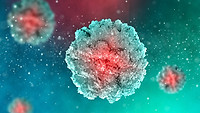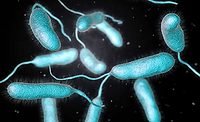Scientists Discover How Foodborne Vibrio Infects People, Could Lead to New Treatments

Credit: John Cameron via Unsplash
Researchers at the University of Texas (UT) Southwestern Medical Center have discovered how foodborne pathogen Vibrio parahaemolyticus infects people after eating raw or undercooked shellfish. The findings could lead to new ways to treat illness caused by the enteric bacteria.
The study provides the first visual evidence of how a gut bacterial pathogen uses an “assembly method” to build syringe-like structures to inject toxins into intestinal cells, giving a new view of how enteric bacteria, when exposed to bile acids, efficiently respond and build a virulence system.
V. parahaemolyticus, commonly found in warm coastal waters, is a leading cause of seafood-related food poisoning. People infected often have diarrhea, cramping, vomiting, fever, and chills. As a result of climate change and warming waters, Vibrio has been highlighted by experts as an increasing food safety concern.
Researchers already knew that V. parahaemolyticus injects molecules into human cells using a syringe-like structure called the type III secretion system 2 (T3SS2). However, these “syringes,” composed of 19 different proteins, are not produced or assembled until the bacteria are inside the intestines. Scientists were not sure exactly how this occurs.
The latest findings build on the work of a previous study, in which components of V. parahaemolyticus T3SS2 were tagged with fluorescent markers and were tracked using super-resolution microscopy as the bacteria were grown in different conditions. The researchers discovered that when V. parahaemolyticus is exposed to bile acids—digestive molecules in the intestines—the bacteria move DNA containing T3SS2 genes close to their membrane. Subsequently, at the exact site where the T3SS2 is needed, V. parahaemolyticus transcribes that DNA into RNA, translates the RNA into protein, and assembles the components of the T3SS2 through the membrane in a process known as transertion.
The assembly process was previously thought to occur in more disparate locations around a cell, but pulling the machinery together into one place on the bacterium’s membrane likely helps V. parahaemolyticus more quickly and efficiently build the T3SS2 and infect cells. Since other enteric bacteria contain molecular components similar to V. parahaemolyticus, the phenomenon of transertion may be widely used, the researchers hypothesize.
The findings imply that other gastrointestinal pathogens may also use the transertion mechanism to mediate efficient assembly of complex molecular machines in response to environmental cues. More work is required to determine which bacteria use transertion to build their T3SS structures and whether drugs could be developed that block transertion to treat V. parahaemolyticus infections.
Looking for a reprint of this article?
From high-res PDFs to custom plaques, order your copy today!






